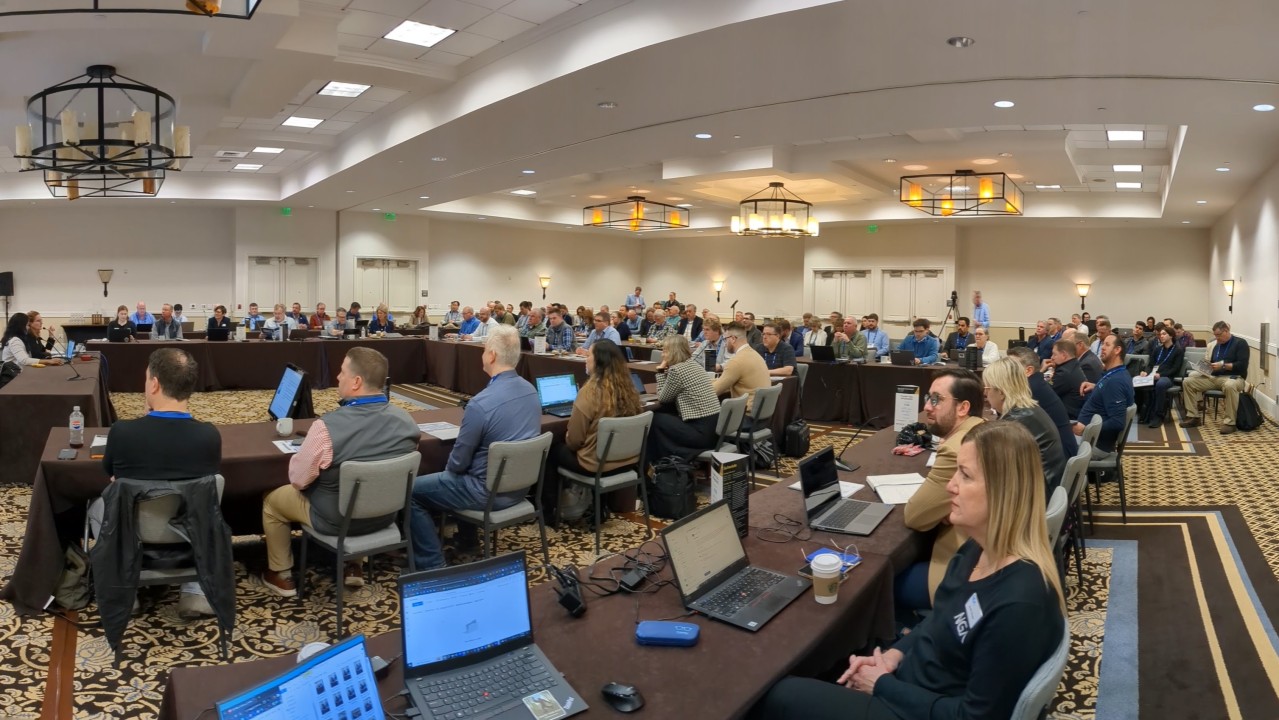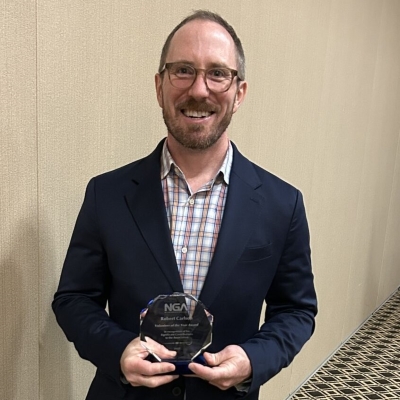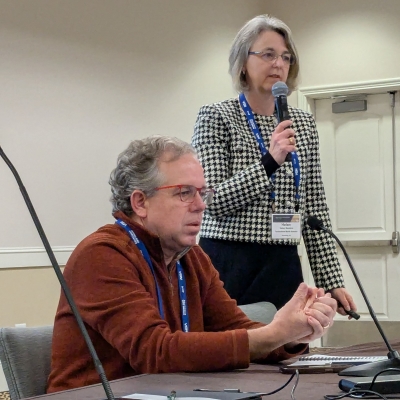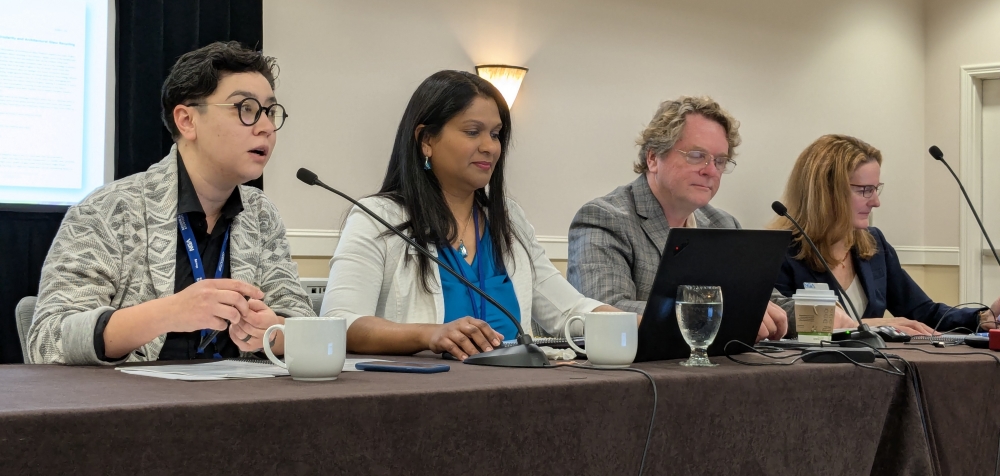
The National Glass Association’s Glass Conference in Carlsbad, California, brought together industry leaders to discuss sustainability, regulatory developments, economic conditions, and evolving security standards. From federal sustainability initiatives to school security advancements, the conference underscored the industry’s adaptability in the face of rapid change. The conference made one thing clear: engagement and proactive adaptation are critical to the future of the glass industry.
Advancing school security standards
A key discussion at the conference centered on school security. The NGA School Security Task Group and industry experts addressed the importance of developing standardized security measures for fenestration systems. Testing methods, such as ASTM F3561 for forced-entry resistance, were discussed, emphasizing the need for industry-wide clarity on terms like “bullet-resistant” rather than misleading claims of “bulletproof” glass.
Lisa Winckler from the International Window Film Association highlighted the role of surface-applied films in enhancing security. The absence of clear codes and standards for school security remains a challenge, underscoring the need for coordinated efforts in upcoming building code proposals.
Trade policy, legislative tracking and future advocacy
Representatives from NGA’s government affairs consultant, K&L Gates, discussed potential implications of the new presidential administration for the glass industry and the NGA’s ongoing advocacy efforts. Laurie Purpuro, K&L government affairs counselor, was onsite to offer insights on how current glass industry advocacy initiatives could progress in the new Congress. Additionally, attendees heard comments by video from trade expert Nate Bolin, partner, K&L Gates, regarding the impact of tariffs on industry.
“Overall, you can expect that whatever additional costs result from tariffs in the short and medium term, these are additional costs that the current administration is willing to live with,” said Bolin. “It will simply be a fact of life in the U.S. market going forward.”
Bolin recommend that companies in the construction market look closely at their supply chains. “Make sure you’re looking at alternatives for sourcing of materials. Make sure you’re looking at spreading the risk, investing in manufacturing, supply chain operations in multiple locations,” he said.
NGA’s Advocacy Committee, chaired by Paul Bush of Vitro Architectural Glass, discussed industry challenges and legislative priorities. Topics included Tax Credit 48, school security legislation in Utah, and the need for continued engagement in sustainability discussions. NGA will continue to highlight high-performance windows and school security improvements as top advocacy topics.
EPA grant workshop: Advancing sustainability and transparency
Kicking off the conference, NGA’s Urmilla Jokhu-Sowell and Thomas Culp from Birch Point Consulting detailed the $2.1-million EPA grant that the NGA was selected to receive to improve Environmental Product Declarations (EPDs) and collect data on architectural glass recycling. The rising demand for EPDs reflects increasing pressure from architects and general contractors and “Buy Clean” policies requiring stricter carbon accounting.

For many companies, the ability to provide an EPD is becoming a cost of doing business, as failing to supply one can lead to lost project opportunities. Beyond compliance, EPDs offer a competitive edge, providing manufacturers with insights into environmental and financial impacts while enhancing industry transparency.
During the conference, NGA officials also noted that the Trump Administration has put a pause on all EPA grants for 30-90 days pending review of federal government activities. "NGA believes it is important to gather preliminary information from workshop participants now, so we are ready to execute the grant work once the review process is complete," officials said.
Recognizing industry leadership
Robert Carlson of Tristar Glass Products was honored as the 2025 NGA Volunteer of the Year at the Volunteer Celebration Dinner. Carlson, a committed industry advocate, highlighted the importance of task group participation in shaping the future of glass and glazing.
“I think that being involved in these task groups, being a part of the glass association, is such a wonderful opportunity to control your own destiny. You get to be someone who makes a change for something that impacts your business and your industry. You get to be involved,” Carlson said in accepting the award.
Economic outlook and market trends
Katy Devlin, NGA’s vice president of content and programming, addressed the economic forces shaping the glass sector. While inflation remains above desired levels at 2.9%, the U.S. economy continues to show resilience, with job growth surpassing expectations. However, labor shortages remain a persistent challenge.
Construction spending trends also highlighted the rapid rise of data center construction as a key driver of growth, while other sectors showed signs of softening. Early findings from Glass Magazine’s Top Glass Fabricators report suggest declining sales for many companies. Product-wise, demand for bird-friendly and security glass continues to gain traction.
Sustainability, resiliency and regulatory challenges

Helen Sanders of Technoform North America emphasized the importance of high-performance fenestration systems, calling for improved supply chains and increased market competitiveness. Cost and education barriers remain challenges for adoption among stakeholders, but regulatory incentives could help drive adoption.
Lance Davis, a federal sustainability architect, outlined the government’s commitment to carbon reduction in new federal buildings, with a goal of 90% fossil fuel-free reduction today and 100% by 2030. Davis stressed the importance of collaboration among architects, engineers, and policymakers to meet these aggressive targets.
Thomas Zaremba, NGA code consultant, called for stronger building codes to enhance resilience against natural disasters. With over 32 million U.S. homes at high risk from hurricanes alone, he advocated for increased use of hurricane-rated and fire-resistant glazing.
Collaboration on certification and training
Terry Schafer from Administrative Management Systems Inc. provided updates on key safety certification programs. The Safety Glazing Certification Council (SGCC) and Insulated Glass Certification Program (IGCC) continue to align standards such as ANSI Z97.1, CPSC 16 CFR 1201, and CGSB 12.1 to enhance product reliability.
A breakthrough in insulating glass testing—the Rapid Assessment Chamber—illustrated how testing time can be reduced from months to just 14 days, helping to meet industry demand more efficiently.
Amy Becker from the Fenestration Glazing Industry Alliance introduced the Fenestration Masters 3.0 program, designed to advance industry knowledge on sustainability and technical standards.

